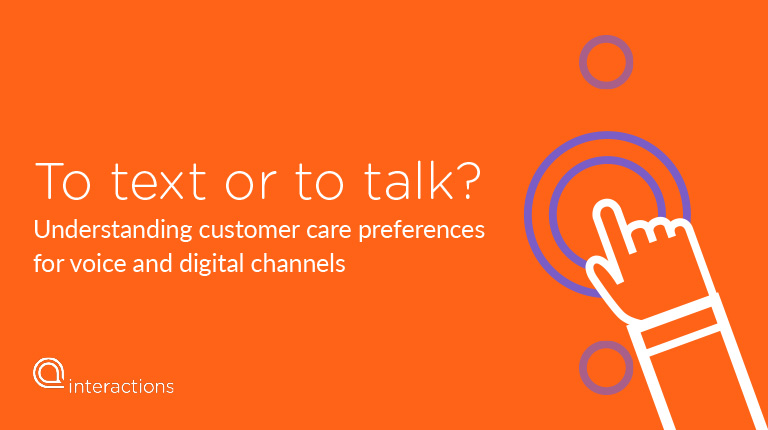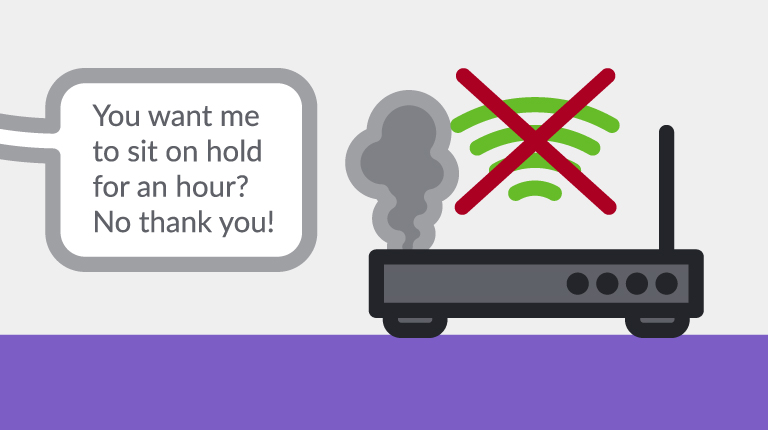As customer care channels continue to evolve and expand, there’s been a lot of debate about which channels customers actually prefer to interact with brands. Previous Interactions research has shown that — despite anecdotal evidence — there isn’t necessarily a generational split when it comes to this issue. Not all millennials prefer texting, and not all boomers prefer the phone. The issue of channel choice is often far more complicated and depends on factors such as the company consumers are trying to contact, and the complexity of the issue the consumer is trying to resolve.
In a recent survey Interactions and Harris Poll revisited this question about consumer channel preferences. This time, however, we wanted to delve deeper into the reasons why consumers choose one channel over another, and whether common frustrations with specific channels were driving consumers to pick alternatives.
What we found is that consumers are actually split on the best way to communicate with a company. Here are three main takeaways from this new research.
1. Consumers are Split on the Best Way to Communicate
The reality is that when it comes to using voice versus texting or typing, consumers are split on which method they prefer. While 51% prefer texting or typing overall, 49% prefer voice channels when communicating with a company. That’s not to say that there aren’t differences when it comes to age groups. Millennials, for example, are most likely to prefer texting or typing (67% compared to 55% of Gen Xers and 33% of Baby Boomers).
2. Voice is Generally Easier
There are, however, a number of reasons why some consumers prefer voice over texting or typing when it comes to interacting with a company. The major takeaway is that using voice channels is simply an easier way to communicate (according to 61% of respondents). Consumers believe that using voice enables them to resolve issues fasted (57%) and to better express themselves (52%).
When it comes to texting or typing, on the other hand, the most commonly cited reason for using these kinds of channels was to avoid wait time (according to 39% of respondents). So, voice is the easier channel to use to quickly and effectively resolve issues, but challenges such as long hold times are forcing consumers to try digital channels as a workaround.
3. But Voice is Still Very Frustrating
The data shows that nearly half of Americans prefer voice channels regardless of the circumstance. Beyond that, nearly all consumers agree that there are specific instances — like when speed or complexity are big concerns — where voice is always the better channel. Unfortunately, the majority of customers are interacting with voice channels that apply outdated technology that is actually meant to deflect or contain conversations, rather than resolve issues.
The result is a very frustrating experience for consumers. Nearly all consumers (94%) report having experienced frustration when using voice channels to communicate with a company.
Consumer preferences when it comes to customer care and the channels they use are constantly evolving. As the results of this study show, consumers are mostly still split when it comes to preferring texting or typing compared to voice channels. And as a company, it’s important to invest in customer care channels that work, and meet your customers where they want to be.
The important takeaway, though, is that while digital channels continue to grow, voice still plays a major role in customer service. For some consumers, it’s because they prefer this method. For others, it’s a matter of convenience — or at least that’s how it starts out. The reality is that the majority of AI voice solutions still cause a great deal of frustration for customers. They force customers to repeat themselves, wait on hold, and learn how to speak like a robot to get their issues resolved.
To read the full results of this research, download our ebook, To Talk or to Text? below.





